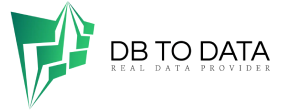The evolution of influencer marketing in just a few years has been palpable for everyone: The transition from simple
public relations actions has become major advertising campaigns that are gaining more and more prominence.
To explain the evolution and current situation of Influencer Marketing, we will analyze companies and brands with influencers in a related way:
We are currently facing a situation of comprehensive professionalization of the sector. We have seen how the different companies (brands and agencies) that take part in the game have seen the benefits of implementing this type of strategy and have worked to consolidate them as necessary in any marketing plan.
In the early years we saw how the scenario evolved from giving away simple product samples in exchange for specific
prescriptions to the creation of experiences such as trips or events by advertising database brands for influencers.
Financial compensation in exchange for prescription actions was the turning point; once it came into play, the
relationships between brands and influencers became more professional: drafting collaboration agreements, timings and
publication dates to include in media plans and other formalities that make up the current situation of Influencer Marketing.
We see how the role of Influencer
Marketing is becoming increasingly larger, being included as part of advertising actions and being managed by media
planners as a new strategic part. With the intervention of more it is more than proven people in the process, we see how the decision-making of brands is becoming more planned and controlled, something that also means that actions are less natural and influencers have more restrictions to create content.
One of the reasons for the increased importance of this type of strategy for brands is the increase in the budget allocated
to campaigns in recent years: we have gone from campaigns of €6,000 on average to campaigns of €15,000-
€20,000. It is too early to say that we are approaching the North American market where the average is $50,000 but the trend is upward.
One of the most notable changes that has occurred is the transfer of creativity into the hands of brands and not
influencers. Initially, influencers were free to create content as there was no professional agreement. Once brands
observed the significant communication impacts created by influencers, they decided to take control of that aspect and
create actions that were fully aligned with their communication plans. This change is one of the most controversial; the
naturalness of prescriptions has been lost, turning them more b2c phone list and more into something commercial.
Brands and agencies are faced with a new challenge: creating increasingly professional and controlled campaigns without losing the naturalness of the actions.
Not only do we see changes in the creation or resources of campaigns by companies
Influencer marketing The use of technology or the need to control and measure campaigns have taken on a leading role,
which requires the professionalization of strategies. The number of campaigns carried out by the same brand is
increasingly larger and the standardization of processes is one of the priority needs. Tools that facilitate search and profile
analysis are increasingly in demand due to cost savings. On the other hand, as in any marketing strategy, the need to
analyze and measure the results of actions is increasingly important to improve future campaigns.
As we explained before
Influencers have changed their way of working, becoming more and more professional with representation agencies,
signing agreements or editorial plans. Little by little, influencers have evolved into content creators, investing resources to improve the quality of their work, turning what was once a hobby into a profession.
Given the attractiveness of the sector, the number of influencers has increased very easily, creating new types of influencers: Microinfluencers, amplifiers in specific audience niches, Top Influencers, etc.

